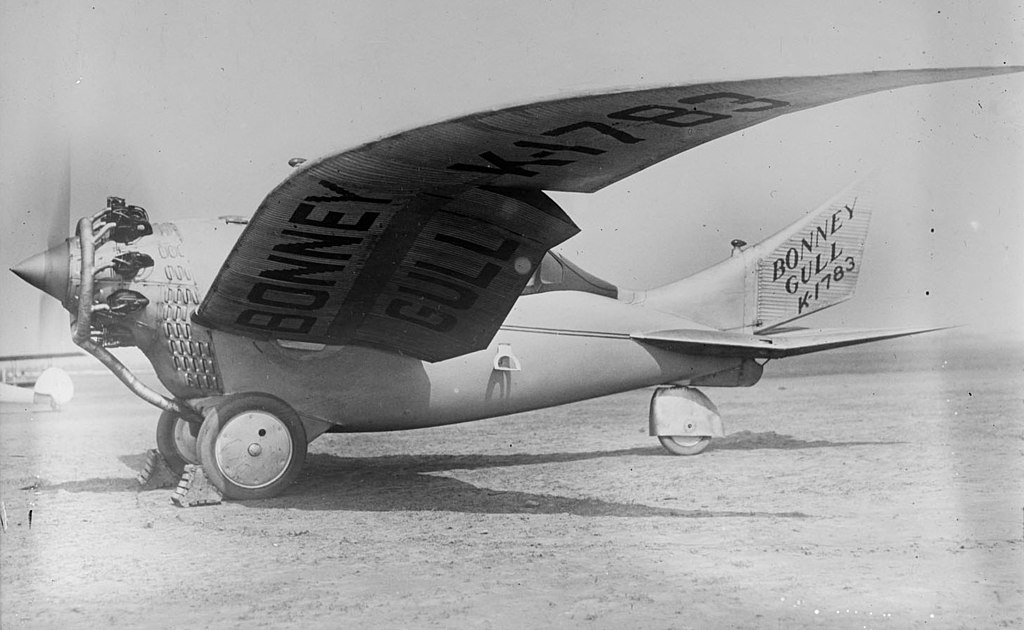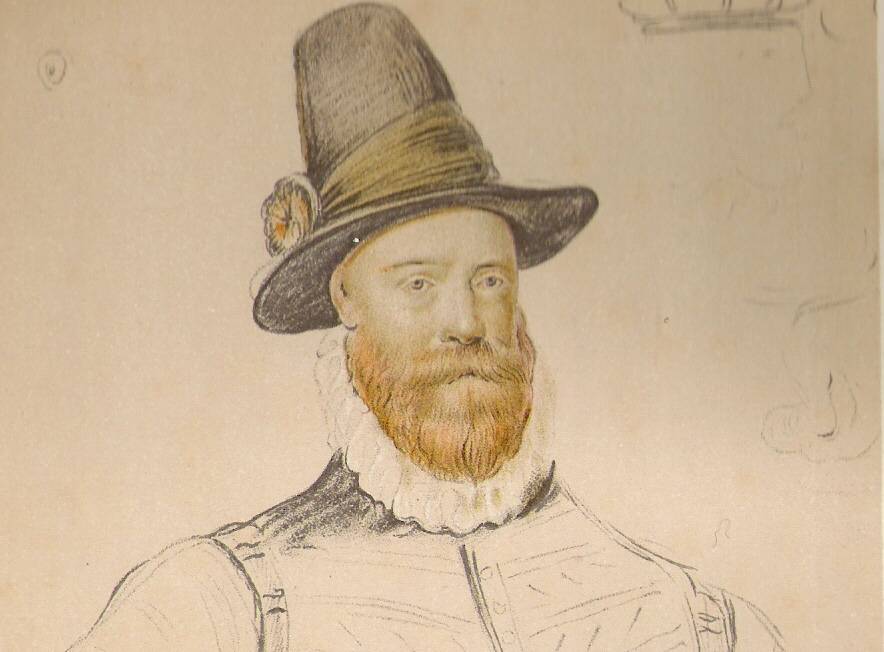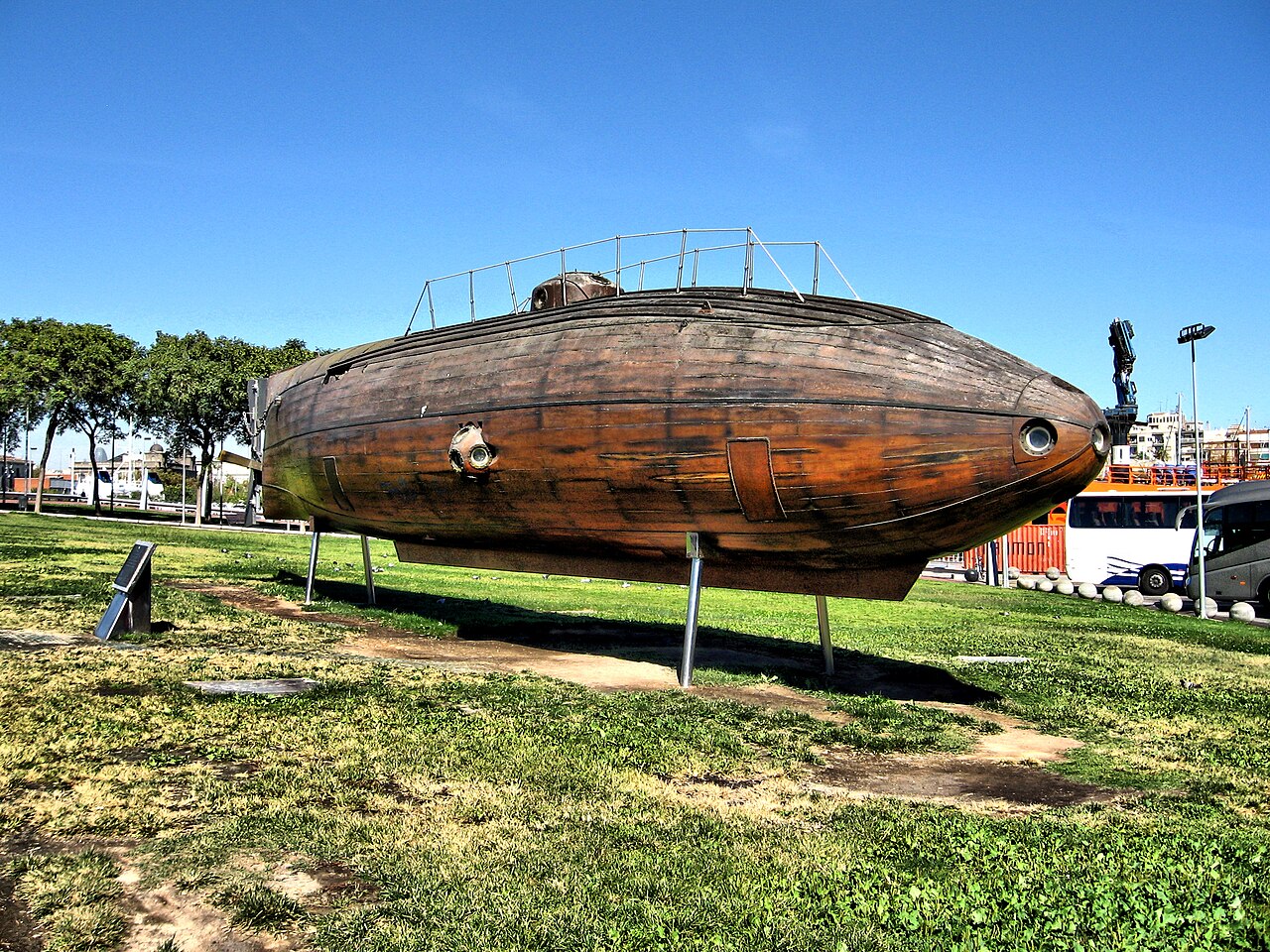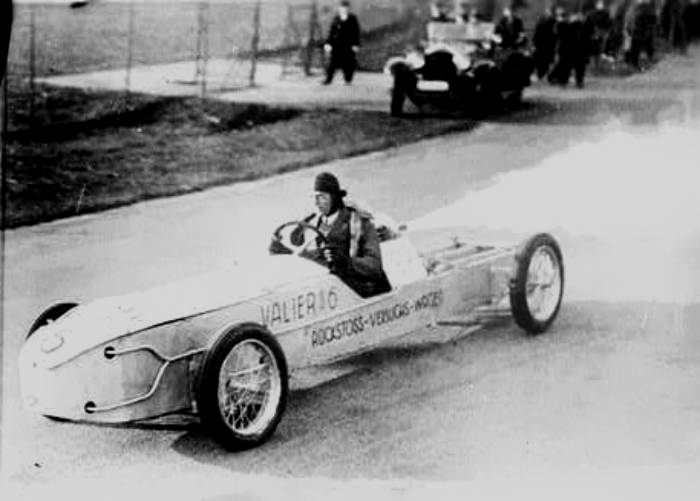Inventors Who Were Killed By Their Creations
Sometimes, inventors make things with the best of intentions but, unfortunately, receive the worst outcomes. Here are some of the world's brightest minds who were .

Henry Winstanley
Henry Winstanley designed and built the world's first offshore lighthouse in Devon, England, between 1696 and 1698. During the Great Storm of 1703, Winstanley and five others decided to seek shelter in the lighthouse. The storm destroyed the lighthouse, and no trace of them was ever found.
 Henry Winstanley, Wikimedia Commons
Henry Winstanley, Wikimedia Commons
Thomas Andrews
Thomas Andrews was the naval architect who designed the ill-fated RMS Titanic vessel. He and 1,500 other people aboard the Titanic drowned in the waters of the Atlantic when the ship struck an iceberg.
 Willy Stöwer, Wikimedia Commons
Willy Stöwer, Wikimedia Commons
Alexander Bogdanov
Russian scientist Alexander Bogdanov founded the world's first Institute of Blood Transfusion in 1926, despite the world's first blood transfusion occurring in 1665, not long after the discovery of blood circulation. Bogdanov believed that his blood was immune to the disease tuberculosis, which had infected a 21-year-old student of his, but was inactive. He also believed that the younger man's blood cells would rejuvenate his aging body. They did not—instead, they destroyed his red blood cells. Bogdanov died of the reaction between his blood and the student's.
 Unknown Author, Wikimedia Commons
Unknown Author, Wikimedia Commons
Thomas Midgely Jr
Despite inventing leaded gasoline in the 20th century and chlorofluorocarbons, Thomas Midgely Jr would meet an unfortunate fate at the hands of his other invention: a system of ropes and pulleys to help others lift him out of bed. Midgely Jr had contracted polio at 51 and was bed-ridden, but died of strangulation in 1955 after becoming entangled in his rope-and-pulley system.
 Unknown Author, Wikimedia Commons
Unknown Author, Wikimedia Commons
Georg Richmann
Georg Richmann was a Russian scientist who built an apparatus to study the effects of electricity harnessed from lightning. Little did Richmann know, he would be doing all the harnessing—he was electrocuted after being struck by a lightning ball in the forehead.
 Stenglin and E. Fedoseeva, Wikimedia Commons
Stenglin and E. Fedoseeva, Wikimedia Commons
Webster Wagner
Webster Wagner invented two railway sleepers in the late 1870s—unfortunately perishing after being crushed between those two cars in a tragic accident.
 Daniel Case, Wikimedia Commons
Daniel Case, Wikimedia Commons
Henry Thuile
Henry Thuile was an Egyptian inventor who designed and built the large steam locomotive, the Thuile. He met his end in 1899, after being thrown from the moving locomotive during a test-run of the train between Chartres and Orléans, France.
 Unknown Author, Wikimedia Commons
Unknown Author, Wikimedia Commons
Valerian Abakovsky
Valerian Abakovsky was a Soviet engineer who constructed the Aerowagon, a high-speed railcar fitted with an aircraft engine and propeller, enabling it to reach huge speeds. It derailed in 1921 with Abakovsky and 21 other people aboard. He and seven others perished.
 Unknown Author, Wikimedia Commons
Unknown Author, Wikimedia Commons
Max Valler
Max Valler was a member of the German rocket society in the 1920s and one of the inventors of liquid-fueled rocket engines. While testing another engine on May 17, 1930, it exploded on his test bench, killing him instantly.
Mike Hughes
Mike Hughes was an American limousine driver and flat-earther, who also built his own steam-powered rockets. He died on February 22, 2020, while filming a stunt for a Science Channel TV series, after one of his rockets failed, causing him to plummet to earth.
Karel Soucek
Karel Soucek was a Czech stuntman who had developed a "shock-absorbent barrel". While testing this shock absorbency by being dropped from the roof of the Houston Aerodrome (a height of 2,150 feet) in 1985, Soucek's barrel collided with the rim of the water tank that was meant to catch him, fatally wounding him.
 George Bailey, Wikimedia Commons
George Bailey, Wikimedia Commons
Luis Jimenez
Luis Jimenez was an American artist and sculptor who perished in 2006 while sculpting an elaborate horse, commissioned by the Denver International Airport in Colorado. A piece from the mustang horse sculpture came loose in Jimenez's studio and severed an artery in his leg. The piece was posthumously completed and stands today at the Denver International Airport as "Blue Mustang".
Jean-François Pilâtre De Roziers
In 1783, Jean-François Pilâtre de Roziers became the first man to make an untethered balloon flight. Spurred on by this success, two years later, he and his flying companion, Pierre Romain, were killed when his balloon crashed. The hybrid balloon invented by de Roziers continues to be used, combining hydrogen and oxygen.
 Unknown Author, Wikimedia Commons
Unknown Author, Wikimedia Commons
Otto Lilienthal
Although the airplane may have been invented by the Wright Brothers, their predecessor and "father of flight" was Otto Lilienthal. Lilienthal invented the first "heavier-than-air" glider in 1891, pioneering "heavier-than-air flight" in the process. He perished in 1896 after his glider stalled. He broke his neck in the 50 foot fall.
 Unknown Author, Wikimedia Commons
Unknown Author, Wikimedia Commons
Franz Reichelt
Franz Reichelt was a French tailor who "invented" the coat-parachute. He tested his new invention from the top of the Eiffel Tower in 1912, after being permitted to use the tower for the test, on the condition that he use a dummy. Lying to French authorities, Reichelt took control of the coat-parachute creation at the last moment and leapt from the tower. The parachute failed to open.
 Unknown Author, Wikimedia Commons
Unknown Author, Wikimedia Commons
Marie Curie
One of the most unfortunate inventors to die at the hand of their own discovery was Marie Curie, the nursing pioneer who saved countless lives from her research into radioactivity and design of mobile X-ray units during WWI. Curie's time around radioactive material would unfortunately cause her demise in 1934.
 Henri Manuel, Wikimedia Commons
Henri Manuel, Wikimedia Commons
Sylvester H Roper
Sylvester H Roper was the inventor of the Roper steam velocipede—a steam-powered buggy-like vehicle that was first tested in 1867. Roper built a second version based on a bicycle frame, with the premise that he would travel much faster than normal bicycles, thanks to the steam-powered engine. Roper met his end while testing the machine in 1896, after it crashed and he suffered a fatal head wound.
 Sylvester H. Roper, Wikimedia Commons
Sylvester H. Roper, Wikimedia Commons
William Pitt
Captain William Pitt was a ferry operator from New Brunswick, Canada, who operated a small ferry across the Kennebecasis River, connecting the community of Kingston on a peninsula to mainland New Brunswick. One day, while sailing, William Pitt fell into the machinery of his ferry, which caused fatal injuries.
 Aussie~mobs, Wikimedia Commons
Aussie~mobs, Wikimedia Commons
Henry Smolinski
Henry Smolinski wanted to invent a flying car—so he did. Borrowing the wings and tail from a Cessna aircraft and the body of a Ford Pinto, the aircraft was known as the AVE Mizar. The first test flight occurred in 1973, but it ended abruptly after the pilot was forced to make an emergency landing. Undeterred, Smolinski took the aircraft up himself for a second flight—it crash landed shortly after take-off, killing him.
 Doug Duncan, CC BY-SA 3.0, Wikimedia Commons
Doug Duncan, CC BY-SA 3.0, Wikimedia Commons
Leonard Bonney
One of history's pioneering aviators, Leonard Bonney had worked with aircraft for most of his professional life, beginning in 1910, when he flew aircraft for the Wright Brothers. After 14 years, he began designing his own gull-wing plane that featured a side-by-side cockpit and was made from duralumin. During the maiden flight of the Bonney Gull, Leonard perished when the aircraft suddenly nosedived into the ground from 50 feet up.
 Leslie Jones, Wikimedia Commons
Leslie Jones, Wikimedia Commons
Horace Hunley
The inventor of the hand-powered submarine, first used during the American Civil War, Horace Hunley met his end aboard the HL Hunley (named after him), after the vessel took on water through open hatches. Hunley drowned, along with eight other crew members.
 Alabama Department of Archives and History, Wikimedia Commons
Alabama Department of Archives and History, Wikimedia Commons
Louis Slotin
Louis Alexander Slotin was a Canadian physicist who was part of the Manhattan Project during WWII, performing experiments on uranium and plutonium to determine their critical mass thresholds. Slotin died on May 30, 1946, just nine days after accidentally setting off a fission reaction which released a highly lethal dose of ionizing radiation upon explosion.
 Unknown Author, Wikimedia Commons
Unknown Author, Wikimedia Commons
James, 4th Earl Of Morton
During his time as Regent of Scotland in the 16th century, James, the 4th Earl of Morton introduced a beheading device called the Maiden—a precursor to the guillotine. In 1581, Morton was found guilty of complicity in the murder of Henry Darnley, the King Consort of Scotland and the second husband of Mary, Queen Of Scots. He was beheaded on June 2, 1581 by the Maiden.
 Herbert Maxwell, Wikimedia Commons
Herbert Maxwell, Wikimedia Commons
John Joseph Montgomery
John Joseph Montgomery is considered a flight pioneer in the United States. Despite never claiming to be the "first", Montgomery is widely considered to the first designer and tester of heavier-than-air fixed-wing gliders in the United States. Unfortunately for Montgomery, while trying to land his glider, Evergreen, in 1911, he encountered turbulence and perished after crash-landing. The hillside where the accident happened is now known as "Montgomery Hill", behind Evergreen Valley College in San Jose, California.
 Unknown Author, Wikimedia Commons
Unknown Author, Wikimedia Commons
Fred Duesenberg
One of the most transformational automotive inventors of all time, Fred Duesenberg is credited with inventing the eight-cylinder engine and a set of four-wheel hydraulic brakes that revolutionized the American automobile industry. He also founded the Duesenberg Motor Company and designed the Duesenberg passenger car. He died after developing pneumonia following a crash in a high-powered prototype of the Duesenberg car in 1932.
 Own archive, Wikimedia Commons
Own archive, Wikimedia Commons
John Day
The English carpenter John Day built a submarine out of wood, betting a friend that he could launch the submarine from a vessel and use ballast weight along the trim of the submarine to make it buoyant after launch. He did this on June 22, 1774, off the coast of Plymouth, England. Taking a candle, water, and biscuits aboard the vessel, John Day was plunged into the Atlantic Ocean—never to be seen again.
 Arthur Kaljas, CC BY-SA 4.0, Wikimedia Commons
Arthur Kaljas, CC BY-SA 4.0, Wikimedia Commons
Sabin Arnold Von Sochocky
This Ukrainian chemist is widely credited with the invention of luminescent paint. He used a formula that contained radium to create the paint, which sold widely throughout the United States and was produced in the US throughout the early 20th century. Sochocky would succumb to aplastic anemia, likely caused by exposure to radiation, in 1928.
 Francis Flinch, Wikimedia Commons
Francis Flinch, Wikimedia Commons
William Bullock
William Bullock is the inventor of the web rotary printing press—a dramatic improvement on the rotary printing press invented by Richard March Hoe in 1863. Bullock's innovation allowed for large rolls of paper to be fed through the press automatically, self-adjusted, printed on both sides, and even cut by the machine. Bullock's printing press would unfortunately cause his downfall after his leg was trapped in one of his machines in 1867. He died from gangrene infection during an operation to amputate the leg.
 Unknown Author, Wikimedia Commons
Unknown Author, Wikimedia Commons
Safety... What's That?
The creator of the infamous OceanGate submersible, Stockton Rush, and four other passengers sought to take the submersible to the Titanic shipwreck site in the Atlantic in 2023. Wrought with safety concerns from the start, Rush did not seek safety certifications, claiming: "At some point, safety is just pure waste. I mean, if you just want to be safe, don't get out of bed". Its imploded wreckage was located on September 18, 2024.
 U.S. Coast Guard, Wikimedia Commons
U.S. Coast Guard, Wikimedia Commons










